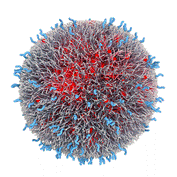Biotechnology, Center for
Date of this Version
2022
Document Type
Article
Citation
Molecular Therapy: Nucleic Acids Vol. 29 September 2022
doi:10.1016/j.omtn.2022.08.018.
Abstract
Isoform switching events with predicted functional consequences are common in many cancers, but characterization of switching events in esophageal adenocarcinoma (EAC) is lacking. Next-generation sequencing was used to detect levels of RNA transcripts and identify specific isoforms in treatment- naïve esophageal tissues ranging from premalignant Barrett’s esophagus (BE), BE with low- or high-grade dysplasia (BE.LGD, BE.HGD), and EAC. Samples were stratified by histopathology and TP53 mutation status, identifying significant isoform switching events with predicted functional consequences. Comparing BE.LGD with BE.HGD, a histopathology linked to cancer progression, isoform switching events were identified in 75 genes including KRAS, RNF128, and WRAP53. Stratification based on TP53 status increased the number of significant isoform switches to 135, suggesting switching events affect cellular functions based on TP53 mutation and tissue histopathology. Analysis of isoforms agnostic, exclusive, and shared with mutant TP53 revealed unique signatures including demethylation, lipid and retinoic acid metabolism, and glucuronidation, respectively. Nearly half of isoform switching events were identified without significant gene-level expression changes. Importantly, two TP53-interacting isoforms, RNF128 and WRAP53, were significantly linked to patient survival. Thus, analysis of isoform switching events may provide new insight for the identification of prognostic markers and inform new potential therapeutic targets for EAC.


Comments
This is an open access article under the CC BY-NC-ND license